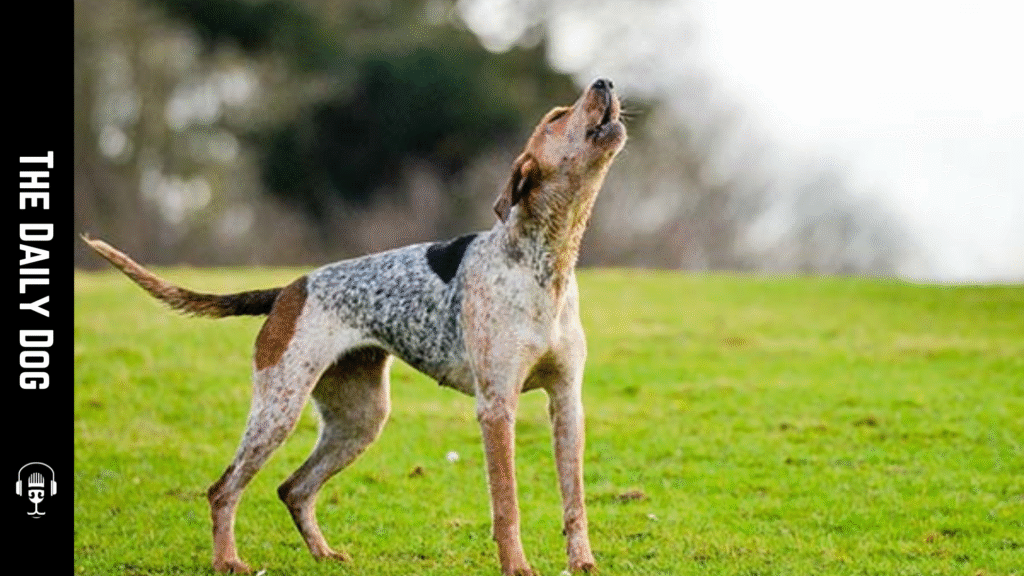The American English Coonhound is a storied breed that blends tenacity, athleticism, and a keen sense of scent into a caliber of versatile performance. Known for its distinctive baying voice and relentless drive, this hound has earned a devoted following among hunters, families, and canine enthusiasts who appreciate a highly capable, trainable, and affectionate companion. If you’re considering adding an American English Coonhound to your home, understanding its temperament, care needs, training essentials, and lifestyle compatibility will help you determine whether this remarkable hound is the right match for your situation.
A Heritage that Shapes a Modern Hunter
The American English Coonhound’s origins trace back to early American frontier days, where settlers bred foxhounds and coonhounds to tackle the rugged terrains and varied habitats of the United States. The goal was a robust, rugged working dog with an exceptional nose, endurance, and a voice capable of carrying over long distances in the field. Today’s American English Coonhound remains faithful to that legacy: it is a breed built for long pursuits, often in woodlands, fields, and rugged countryside. This heritage informs not only its hunting prowess but also its confident, courageous demeanor and strong desire to please its human companions.
Character and Temperament: Confidence with Affection
The temperament of an American English Coonhound is defined by confidence, loyalty, and an affectionate nature toward family members. These dogs tend to form deep bonds with their households and are often described as loving, devoted partners who thrive on interaction and companionship. They typically exhibit good-natured tolerance with children when properly socialized, making them suitable for active families that can provide firm structure and ongoing engagement. One hallmark of the breed is its independence. While they are eager to please, they also possess a thoughtful, investigative mind and an instinctual drive to explore their surroundings. This blend of independence and affection often translates into dogs that are both steady and alert, ready to alert their family to interesting scents or potential dangers.
Energy Level and Exercise Needs
American English Coonhounds are high-energy dogs with substantial stamina. They were bred to pursue scent trails across expansive landscapes, and that heritage translates into a need for regular, rigorous activity. Daily long walks, vigorous play sessions, scent-based enrichment, and opportunities to run in a safely fenced area are essential to channel their energy constructively. Without sufficient exercise, these dogs can become bored, which may manifest as restlessness, vocalization, or other unwanted behaviors. Training sessions that incorporate physical activity and mental challenges will keep them engaged and fulfilled. If you lead an active lifestyle, you’ll likely build a strong, mutually rewarding bond with an American English Coonhound.
Vocalization, Scent Drive, and Training Considerations
One distinctive feature of the American English Coonhound is its voice. The breed is famous for its melodious baying, a trait that was instrumental in hunting and tracking. While this vocalization is charming to many owners, it can be a challenge in apartment living or neighborhoods with strict noise restrictions. Prospective owners should assess their living situation and neighborhood norms before bringing a coonhound home. In terms of training, these dogs respond best to positive reinforcement, consistent boundaries, and engaging scent-work activities. Early socialization is important to help manage their driven nature and ensure they remain well-mannersed around unfamiliar people and animals. Training that emphasizes nose-work, obedience, and impulse control will help the breed flourish in a modern home environment.
Grooming and Care: A Low-Maintenance Coat with High-Performance Needs
The American English Coonhound has a short, sleek coat that requires minimal grooming. Regular brushing helps reduce shedding and distribute natural oils, contributing to a healthy coat and skin. Bathing is generally infrequent, only when they get particularly dirty or develop odor, since over-bathing can strip essential oils. Like many medium-to-large breeds, routine dental care, ear cleaning, and nail trims are important components of a healthy regimen. Ear care is especially important for hounds, as their long, pendulous ears can be prone to infection if not kept clean and dry after walks in grassy or damp environments. A well-rounded care routine supports comfort, health, and overall well-being throughout life.
Health Considerations and Lifespan
The American English Coonhound typically enjoys good health when paired with a responsible breeding program and consistent, quality care. As with any breed, prospective owners should be aware of potential genetic predispositions and common concerns. Routine veterinary visits, vaccinations, parasite prevention, and a balanced diet contribute to longevity and vitality. Life expectancy for this breed generally falls in the range of 10 to 12 years, with many individuals living longer with proper care. Staying attuned to changes in appetite, energy level, mobility, and behavior can help catch issues early and support an active, comfortable life.
Nutrition: Fuel for an Active Leash Partner
Feeding an American English Coonhound requires attention to portion size, calorie intake, and the dog’s energy demands. Active, athletic dogs benefit from high-quality dog foods formulated for large to medium-large breeds and an emphasis on lean protein and balanced nutrients. The specific amount depends on age, weight, activity level, and metabolism, so consult with a veterinarian or a canine nutritionist to tailor a feeding plan. It’s wise to monitor weight closely and adjust portions as the dog grows from puppyhood into adulthood and through aging. Providing fresh water, avoiding overfeeding, and offering occasional enrichment treats that support training goals can help maintain optimal body condition.
Puppy Training: Building a Solid Foundation
Starting training early is crucial for an American English Coonhound. Puppies are naturally curious and can be distractible, so short, frequent sessions work best. Positive reinforcement, praise, tasty rewards, and play, helps establish a cooperative attitude toward training tasks. Socialization should begin in puppyhood, exposing the pup to diverse people, environments, and other dogs. Because of the breed’s scent-driven nature, incorporating nose-work activities helps satisfy their instincts while reinforcing focus. Crate training can support housebreaking and provide a safe space for rest during busy days. Consistency is essential; clear rules, predictable routines, and patient guidance produce the most reliable outcomes over time.
Adolescent and Adult Training: Channeling Drive into Positive Channels
As the dog matures, its drive may intensify, making continued commitment to training crucial. Advanced obedience, impulse control exercises, and structured routines help manage energy and reduce unwanted behaviors. Because American English Coonhounds are highly scent-oriented, maintaining boundaries during scent outings is vital. Use long lines, secure fencing, and controlled environments to practice recall and controlled exploration. Regular training fosters collaboration, strengthens the bond with your owner, and ensures the dog remains a well-behaved member of the household, capable of participating in family activities, hikes, and outdoor adventures.
Living with an American English Coonhound: What to Expect
This breed thrives in homes that can provide daily physical activity, mental stimulation, and ample affection. They are well-suited to households with access to outdoor space, where they can sprint, track scents, and enjoyVaried terrain. Given their vocal tendencies, households should consider neighbor considerations and local noise regulations. A home with a secure yard, proper fencing, and an engaging routine will help the dog feel content and integrated. While they are affectionate and loyal, these dogs are not ideal for people seeking a low-maintenance, quiet companion. They require ongoing engagement, training, and a steady, structured environment that respects their heritage as tireless trackers and devoted family members.
Conclusion: A Storied Companion for Active Homes
The American English Coonhound is more than a striking silhouette of a hunting breed. It is a devoted, athletic, and intelligent partner that thrives when given clear leadership, consistent training, and everyday opportunities to hunt, explore, and bond with its human family. If you lead an active lifestyle and can provide the mental and physical engagement necessary to satisfy its strong prey drive and nose-driven curiosity, this breed can be an exceptionally rewarding addition. With the right upbringing, care, and a thoughtful approach to living with a high-energy hound, you’ll enjoy years of companionship marked by loyalty, resilience, and shared adventures.
Practical steps to get started
- Assess your living situation: Do you have enough space and time for daily exercise, scent enrichment, and training?
- Plan an enrichment routine: Include scent-based games, short obedience sessions, and outdoor exploration to channel drive productively.
- Find a responsible breeder or rescue: Look for reputable sources that prioritize health testing and socialization.
- Establish a solid care routine: Regular veterinary visits, dental care, grooming, and a consistent feeding plan.
- Set expectations with neighbors: Consider noise considerations and propose solutions for a harmonious cohabitation.




